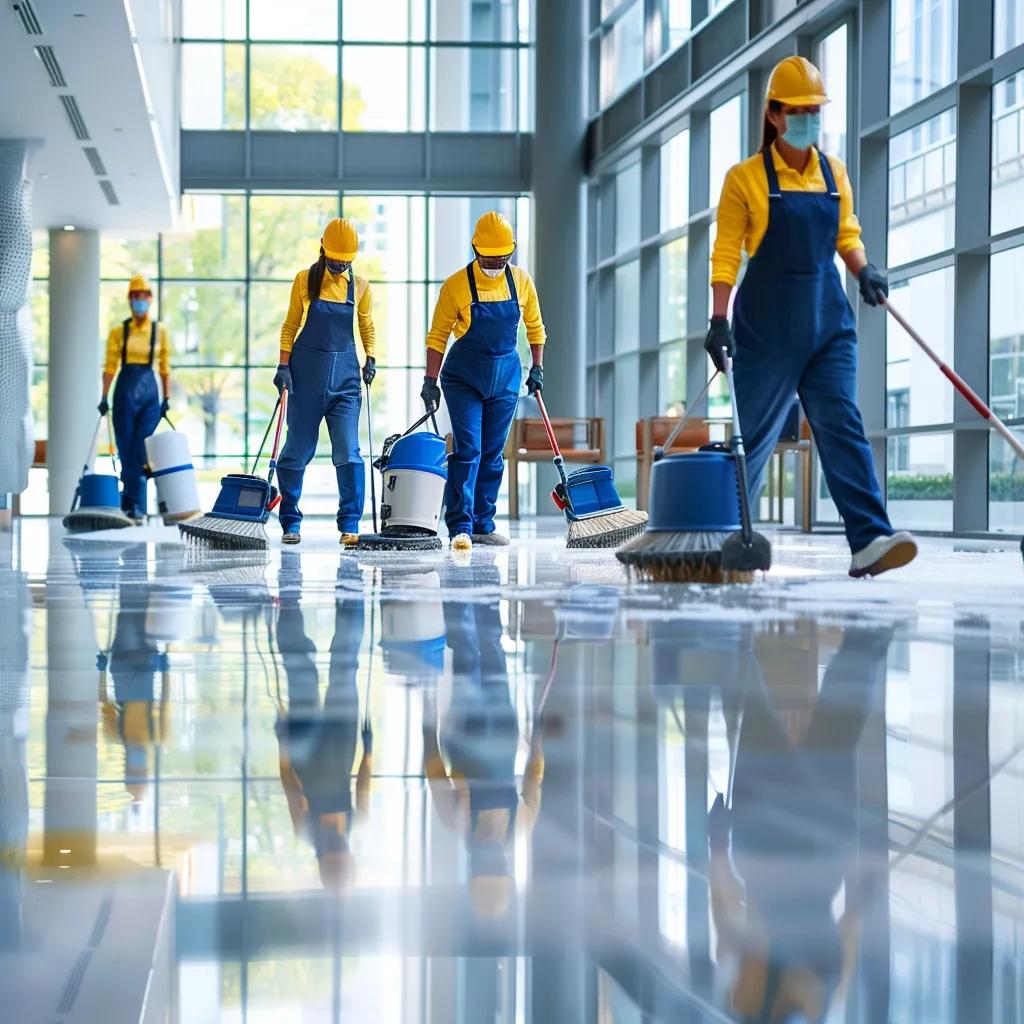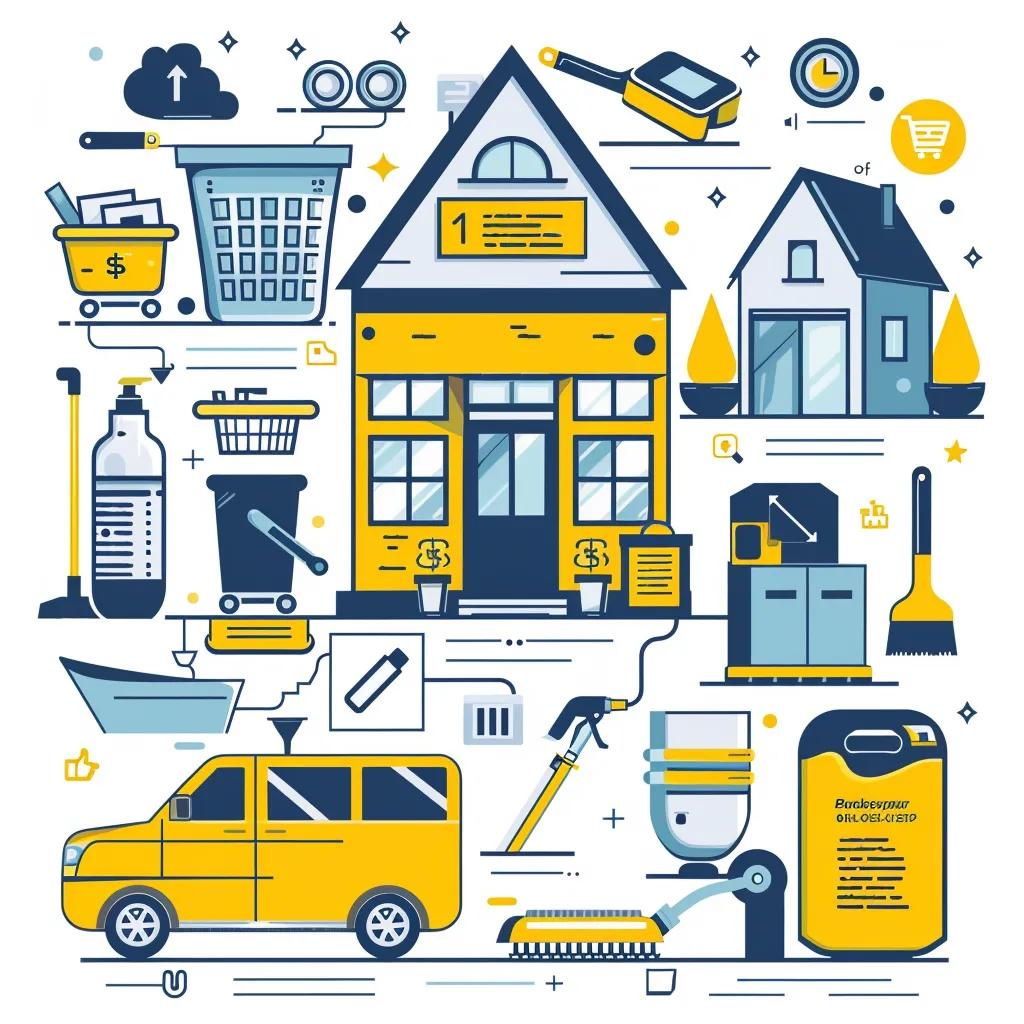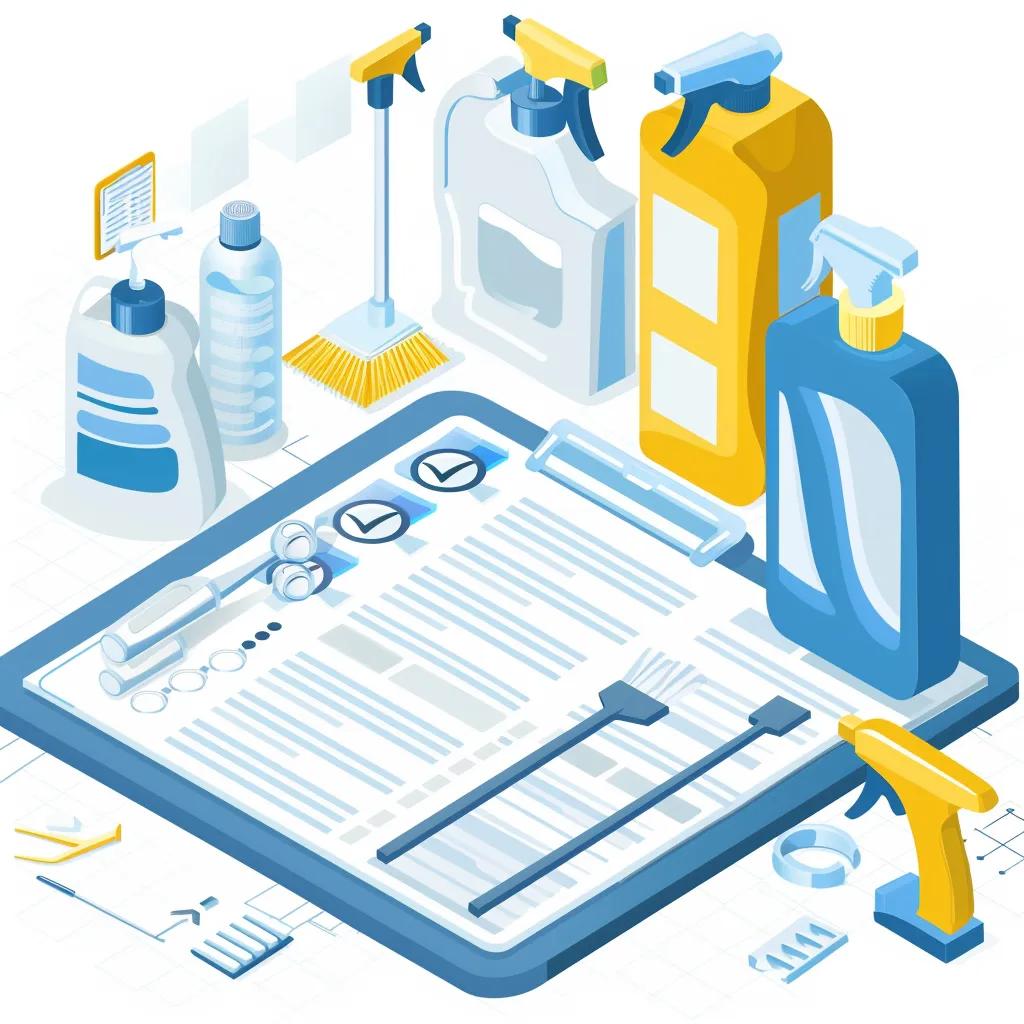
Decoding Commercial Cleaning Pricing to Ensure Quality and Value

Comparing commercial cleaning service prices effectively requires more than spotting the lowest quote—it demands a clear understanding of pricing models, cost drivers, and quality checks to ensure reliable results without hidden trade-offs. This guide outlines how to decode pricing frameworks, identify key factors that influence both cost and cleanliness, assess quality beyond the bottom line, negotiate fair contracts, and measure the long-term benefits of investing in professional services. You’ll also discover localized insights for Macomb County, Oakland County, and Metro Detroit, plus answers to common questions about comparing commercial cleaning quotes. By following these structured tips, your business can secure a transparent, high-value cleaning partnership—whether you oversee an office building, school, or medical facility.
What Are the Main Commercial Cleaning Pricing Models?

Commercial cleaning providers typically offer three distinct pricing frameworks that translate service scope into dollars: per square foot, hourly rates, and flat versus customized quotes. Understanding each model’s calculation method clarifies cost predictability and aligns your budget with operational needs.
Pricing Models in Commercial Cleaning
Commercial cleaning services utilize various pricing models, including per square foot, hourly rates, and flat or customized quotes. Each model offers different advantages, such as predictability in budgeting with per square foot pricing or flexibility for variable tasks with hourly rates. The choice of model depends on the specific needs of the facility.
This research provides a foundational understanding of the different pricing models used in the commercial cleaning industry, which is essential for making informed decisions.
How Does Per Square Foot Pricing Work and When Is It Best?
Per square foot pricing charges a fixed rate for every unit of floor area cleaned, promoting scalable budgets for large spaces. Providers measure total square footage, multiply by a rate (often between $0.08 and $0.20), and present a clear price that scales with facility size. For example, a 10,000 ft² warehouse at $0.10 per ft² yields a $1,000 estimate.
Below is a breakdown of how per square foot rates compare to other models:
| Entity | Attribute | Value |
|---|---|---|
| Per Square Foot Pricing | Rate Range | $0.08–$0.20 per ft² |
| Best For | Large open areas with consistent layouts | |
| Benefit | Predictable scaling of total cleaning costs |
This pricing model enhances budgeting clarity for facilities with straightforward floor plans and consistent cleaning frequency, streamlining the comparison process. Next, assess how hourly rates factor labor variations into a cost equation.
What Are Hourly Rates and Their Impact on Cost?
Hourly rates charge based on the actual time spent cleaning, offering flexibility for variable tasks and irregular schedules. Cleaners log start and end times, multiplied by their hourly wage (commonly $25–$100 per worker), plus overhead. This mechanism benefits facilities with fluctuating cleaning needs or specialized tasks that don’t align with uniform square footage.
Key impacts of hourly pricing include:
- Flexibility: Adjusts for overtime or extended deep-clean sessions.
- Transparency: Enables tracking of labor hours and productivity.
- Variability: Costs can rise if tasks take longer than estimated.
By comparing provider time-tracking methods and labor rates, businesses can gauge whether hourly billing aligns with their workflow. As an alternative, flat and
offer another route to cost certainty.
How Do Flat Rates Compare to Customized Quotes?
Flat rates provide a one-time fee for a predefined scope of work, offering simplicity and cap on expenses regardless of extra time. Customized quotes, by contrast, itemize tasks—such as restroom sanitization, floor care, and surface disinfection—assigning individual costs for each service component. This mechanism supports granular control, ensuring you pay only for required tasks.
- Flat rate models promote cost ceilings that protect against unforeseen overages.
- Customized quotes enhance price transparency and allow selective service bundling.
- Tailored proposals account for special conditions—like hospital-grade disinfection or eco-friendly products—adjusting costs accordingly.
Choosing between these approaches hinges on your facility’s need for fixed budgeting versus service-level flexibility. With these fundamentals in mind, weigh the pros and cons of each model.
What Are the Pros and Cons of Each Pricing Model?
To support clear decision-making, the table below compares the three primary pricing models on their main attributes:
| Entity | Attribute | Value |
|---|---|---|
| Per Square Foot | Pros | Predictable scaling, simple invoicing |
| Cons | May not account for labor intensity variations | |
| Hourly Rate | Pros | Flexible, reflects actual task time |
| Cons | Potentially variable monthly expenses | |
| Flat Rate vs. Custom | Pros | Budget caps (flat), selective service control |
| Cons | Flat rates may omit extra tasks; quotes vary by scope |
Which Key Factors Influence Commercial Cleaning Service Costs and Quality?
Factors Influencing Cleaning Costs
Several factors influence the cost of
services, including facility size and layout, cleaning frequency, industry-specific needs, and location. For example, medical facilities require specialized cleaning protocols, which increase labor and supply expenses. Understanding these factors is crucial for accurate cost comparisons.
This study highlights the various factors that impact the cost of commercial cleaning services, which is directly relevant to the article’s discussion of cost comparison.
How Does Facility Size and Layout Affect Pricing?
Facility size directly scales cleaning time and material usage, making square footage a primary cost driver. Complex layouts—multiple rooms, high-traffic zones, or irregular floor plans—add labor overhead for navigating equipment, moving furniture, and thorough coverage. Larger open areas benefit from per square foot models, while intricate interiors may warrant hourly or customized quotes to reflect additional setup and breakdown tasks.
How Do Cleaning Frequency and Scope of Work Impact Costs?
Increasing cleaning frequency—daily, weekly, or monthly—reduces per-service intensity but can raise total monthly expenses. A detailed scope of work, such as deep scrubbing, window washing, or carpet extraction, introduces specialized labor and equipment charges. Service agreements (SLAs) define task frequency, quality benchmarks, and acceptable turnaround time.
When you align frequency with traffic patterns and risk tolerance, you optimize both cost and sustained cleanliness.
Why Do Industry-Specific Needs Change Pricing?
Industry regulations and hygiene standards differ for medical facilities, schools, and offices. Medical environments require hospital-grade disinfection, HEPA-filtered vacuums, and documented sterilization protocols, increasing labor and supply expenses. Educational institutions emphasize non-toxic, eco-friendly products for student safety, while corporate offices may prioritize presentation and routine surface maintenance.
Custom cleaning plans accommodate these industry constraints, ensuring quality without price surprises.
How Does Location Affect Regional Pricing Differences?
Regional labor rates, overhead costs, and competitive landscapes influence pricing in Macomb County, Oakland County, and Metro Detroit. Urban centers often command higher wages and permit fees, while suburban or rural districts may offer lower base rates. Local expertise by a provider like
leverages 35+ years of area-specific knowledge to tailor cost-effective plans that align with local market conditions.
What Role Do Specialized Services and Equipment Play in Pricing?
Advanced equipment—such as auto-scrubbers, steam cleaners, or electrostatic sprayers—and eco-certified cleaning solutions raise upfront costs but enhance efficiency and sustainability. Providers that invest in specialized tools deliver deeper cleans faster, promoting long-term savings through fewer repeat visits. Factoring these options into your comparison ensures that quoted rates reflect true service scope and technology benefits.
How Can You Assess Commercial Cleaning Quality Beyond Price?
Ensuring service value extends beyond cost analysis into rigorous quality checks. A robust evaluation framework covers industry standards, employee expertise, product efficacy, and communication practices to secure consistent, dependable cleaning outcomes.
What Should a Comprehensive Quality Assurance Checklist Include?

A detailed checklist formalizes quality metrics across all service areas, from restrooms to breakrooms.
- Surface Disinfection: Verification of EPA-approved disinfectants on high-touch areas.
- Floor Care Standards: Inspection of vacuum, sweep, and mop sequences.
- Restroom Sanitation: Confirmation of deodorizing, restocking, and odor control.
- Reporting Protocols: Daily logs and supervisor sign-offs for accountability.
This systematic approach ensures transparent performance tracking and alignments with your facility’s cleanliness requirements.
Why Is Employee Training and Vetting Critical for Quality?
Well-trained cleaning staff deliver consistent, high-quality results by mastering proper chemical concentrations, equipment operation, and safety protocols. Background checks, insurance coverage, and ongoing education on industry best practices demonstrate a provider’s commitment to reliability and risk mitigation. This foundation of professional expertise solidifies trust and reduces operational disruptions.
How Do Cleaning Products and Equipment Affect Service Quality?
High-grade cleaning solutions and modern equipment enhance cleaning efficacy while minimizing environmental impact. Eco-friendly formulations reduce chemical residues and indoor air pollutants, contributing to occupant health and well-being. Advanced tools like microfiber systems and HEPA filtration capture finer particles, offering superior surface and air quality.
Investing in these innovations underscores a provider’s dedication to both performance and sustainability.
How Does Communication and Accountability Ensure Consistent Quality?
Clear, documented communication channels—such as regular progress reports, on-site supervisor contacts, and digital feedback portals—create continuous improvement loops. Accountability frameworks like service scorecards align expectations and prompt timely issue resolution, keeping cleaning standards aligned with evolving facility needs.
What Are Essential Tips for Negotiating Commercial Cleaning Contracts?
A well-structured contract secures fair pricing and service guarantees by defining clear terms, performance metrics, and mutual responsibilities. Smart negotiation focuses on transparency and long-term collaboration.
Which Contract Clauses Are Vital for Fair Agreements?
Key contract terms protect both parties and clarify obligations:
- Scope of Work: Detailed list of tasks, frequencies, and quality benchmarks.
- Payment Terms: Rate structure, invoicing schedule, and late fee policies.
- Termination Clause: Notice period, renewal conditions, and exit penalties.
- Service Level Agreement (SLA): Performance metrics, inspection schedules, and remediation steps.
- Insurance Requirements: Liability coverage, workers’ compensation, and bond details.
Explicitly defining these elements prevents misunderstandings and establishes a foundation for dependable service delivery.
How Do You Request and Analyze Detailed Quotes and Price Breakdowns?
Begin by asking providers to itemize labor, materials, equipment usage, and any one-time fees. Compare comparable line items—such as cost per square foot, per hour, or per task—to isolate variances. Pose clarifying questions about overtime charges, supply markups, and potential surge fees. This granular analysis reveals hidden costs and fosters transparent pricing alignment.
What Value-Added Services Should You Consider for Long-Term Partnerships?
Beyond basic cleaning, consider these complementary services to maximize value:
- Green Cleaning Programs: Adoption of sustainable products and recycling initiatives.
- Floor Maintenance Packages: Scheduled stripping, waxing, and polishing for asset preservation.
- Emergency Response Plans: Rapid disinfection and remediation after incidents.
- 24/7 Scheduling Flexibility: Off-hour services to minimize business interruptions.
Integrating these offerings into your contract often yields better rates and stronger partnership incentives over time.
What Are the Benefits of Investing in Quality Commercial Cleaning Services?
Allocating budget to professional, high-quality cleaning delivers measurable returns in productivity, brand perception, and asset longevity. Quality cleaning transcends surface aesthetics to support health, safety, and corporate image.
How Does Quality Cleaning Boost Employee Productivity and Well-being?
A well-maintained environment reduces allergen and pathogen exposure, decreasing sick days and supporting overall health. Studies show up to 94% of workers feel more productive in a clean workspace. By investing in thorough
and dust management, businesses foster employee morale and operational efficiency.
How Does a Clean Environment Enhance Business Image and Client Impressions?
First impressions matter: 80% of customers associate clean facilities with professionalism and trustworthiness. Consistent, high-quality cleaning elevates brand reputation, boosts client confidence, and strengthens stakeholder relationships through visible commitment to excellence.
How Does Quality Cleaning Protect Assets and Save Costs Long-Term?
Routine maintenance—such as proper floor care and upholstery cleaning—extends the lifespan of carpets, furniture, and equipment by preventing premature wear. Over time, these preventive measures reduce replacement costs and minimize capital expenditures, delivering clear cost savings that offset service investments.
How Can Local Expertise Improve Your Commercial Cleaning Price Comparison?
Local providers bring deep knowledge of regional labor markets, permit requirements, and facility types, translating into tailored plans and accurate cost estimates. McCoy Maintenance leverages over 35 years of Metro Detroit experience to optimize both pricing and performance for area businesses.
What Are Typical Commercial Cleaning Costs in Macomb, Oakland, and Metro Detroit?
In Metro Detroit, average rates fall between:
- $0.10–$0.18 per ft² for standard office cleaning
- $25–$60 per hour for specialized disinfection or window cleaning
- Package rates from $300–$800 per month for small retail or clinic spaces
These localized benchmarks help you validate provider quotes and identify outliers.
How Does Local Experience Affect Service Quality and Pricing?
A local partner understands traffic patterns, facility usage trends, and seasonal demand fluctuations.
’s long-standing presence ensures optimized staffing, supply sourcing, and scheduling flexibility—minimizing overtime costs and guaranteeing on-time performance.
How Can Customized Cleaning Plans Optimize Cost and Quality for Your Business?
Tailored cleaning programs align frequency, scope, and service levels with your facility’s unique requirements. By adjusting tasks—such as prioritizing restrooms during peak hours or scheduling deep cleans after events—custom plans eliminate unnecessary services and focus resources where they deliver the greatest impact. office cleaning
What Are Common Questions When Comparing Commercial Cleaning Service Prices?
Even with solid frameworks, decision-makers often seek clarity on practical comparison steps, value drivers, and contractual must-haves.
How Do I Compare Prices Between Different Commercial Cleaning Providers Effectively?
Begin by securing standardized, itemized proposals that outline scope, frequency, pricing model, and included services. Match tasks line by line—such as dusting, floor care, and supply stocking—to isolate cost differences. Evaluate provider credentials, training programs, and quality assurance protocols alongside price to ensure a balanced assessment.
What Factors Should I Consider Besides Price?
Assess credentials such as insurance coverage, background-checked staff, and industry certifications. Review service guarantees, reporting mechanisms, and communication processes. Consider environmental policies, specialized equipment availability, and partnership longevity as indicators of total value.
How Can I Avoid Sacrificing Quality for Lower Prices?
Implement a quality assurance checklist into contract terms, specifying performance metrics and inspection schedules. Prioritize providers who demonstrate comprehensive training, eco-certified products, and transparent reporting. Emphasize communication protocols that address issues promptly to maintain consistent standards.
What Should Be Included in a Commercial Cleaning Contract?
Ensure the contract specifies scope of work, cleaning frequencies, payment schedules, termination clauses, and insurance requirements. Include service level agreements that define inspection processes, corrective action steps, and documented performance reviews to safeguard both cost and quality expectations.
Investing time in comparing commercial cleaning service prices against quality benchmarks empowers your business to secure transparent, reliable partnerships that deliver measurable returns. By leveraging localized insights from McCoy Maintenance, you gain the dual advantage of competitive pricing and proven performance across Macomb County, Oakland County, and the Metro Detroit area. Request a free, customized cleaning quote today to experience how structured cost analysis and stringent quality standards can elevate your facility’s cleanliness and operational efficiency.
